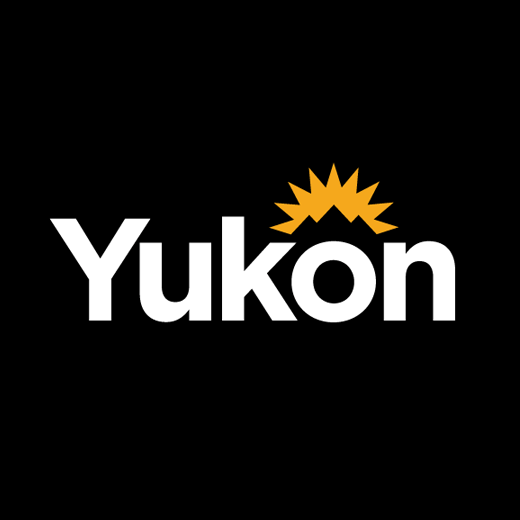inventory
Type of resources
Available actions
Topics
Keywords
Contact for the resource
Provided by
Years
Formats
Representation types
Update frequencies
status
Service types
-

RESULTS opening's forest cover polygons with inventory component provided. Current forest cover submissions into RESULTS must contain attribute and map information. However, there are historical forest cover polygon information where maps are not available. Forest Cover is provided at three critical milestones of at harvesting, at achieved regeneration and at free growing. This is part of the Silviculture and Land status Tracking dataset, which includes tracking achievement of silviculture obligations on Crown Land
-

This spatial layer displays stream inventory sample sites that have had full or partial surveys, and contains measurements or indicator information of the data collected at each survey site on each date.
-

The field plots were used to help during the photo interpretation process. The temporary plots provided essential information to interpreters to relate photo observed attributes with field measurements. The field work for the inventory was carried out during the winter of 2004/2005 with the project delivered by the contractor in October 2005. Delineation was based on 1:10,000 black and white photography acquired by the City of Whitehorse in 2001. Mapping and DTM were available for this project based on the 2001 photography. Distributed from [GeoYukon](https://yukon.ca/geoyukon) by the [Government of Yukon](https://yukon.ca/maps) . Discover more digital map data and interactive maps from Yukon's digital map data collection. For more information: [geomatics.help@yukon.ca](mailto:geomatics.help@yukon.ca)
-

This point feature indicates the location of photo centre points during data capture for the Whitehorse Forest Inventory. The field work for the inventory was carried out during the winter of 2004/2005 with the project delivered by the contractor in October 2005. Delineation was based on 1:10,000 black and white photography acquired by the City of Whitehorse in 2001. New mapping and DTM were available for this project based on that photography. Distributed from [GeoYukon](https://yukon.ca/geoyukon) by the [Government of Yukon](https://yukon.ca/maps) . Discover more digital map data and interactive maps from Yukon's digital map data collection. For more information: [geomatics.help@yukon.ca](mailto:geomatics.help@yukon.ca)
-

This table is a list of polygon attributes to be used in map production for the vegetation Inventory map series. It contains attribute information for polygons in the inventory that are not labeled with the Inventory Annotation. Attribute information is pulled from this table to use as additional labels on the map layout for the Forest Inventory map series. Distributed from [GeoYukon](https://yukon.ca/geoyukon) by the [Government of Yukon](https://yukon.ca/maps) . Discover more digital map data and interactive maps from Yukon's digital map data collection. For more information: [geomatics.help@yukon.ca](mailto:geomatics.help@yukon.ca)
-

This feature delineates forest health disturbances which includes Abiotic and Biotic forest health agents in the Yukon at a scale of 1:100,000. It is a management level forest health overview survey (as opposed to an operational level) - meaning that analysis and mapping are most effective close to the 1:100,000 scale and not larger. This Forest Health Overview surveys has been completed in various stages: 1 ) Starting with mapping the disturbance type, and severity from the Air using Fix wing aircraft on to hardcopy 1:100,000 scale maps ; 2 ) Transfering the Data to a clean Mylar for scanning and digitizing ; and, 3 ) Scanning and digitizing and populate data into GIS spatial database . Distributed from [GeoYukon](https://yukon.ca/geoyukon) by the [Government of Yukon](https://yukon.ca/maps) . Discover more digital map data and interactive maps from Yukon's digital map data collection. For more information: [geomatics.help@yukon.ca](mailto:geomatics.help@yukon.ca)
-

This feature delineates forest and vegetation stands in the Yukon at a scale of 1: 40 ,000. It is a management level forest inventory (as opposed to a n operational level) - meaning that analysis and mapping are most effective close to the 1:40,000 scale and not larger . This inventory has been completed in various stages : delineation from hardcopy black and white photographs took place from 1987 to 2002; while recent data collection has proceeded through a digital (aka 'softcopy') methodology of scanned photographs and digital elevation models. Distributed from [GeoYukon](https://yukon.ca/geoyukon) by the [Government of Yukon](https://yukon.ca/maps) . Discover more digital map data and interactive maps from Yukon's digital map data collection. For more information: [geomatics.help@yukon.ca](mailto:geomatics.help@yukon.ca)
-

This feature delineates forest and vegetation stands in the Yukon at a scale of 1:5,000. It is an operational level forest inventory (as opposed to a management level). This inventory has been completed in various stages, between 2013 and 2014, and delineation via softcopy from stereo images acquired in the years 2007 and 2012. The aerial images used for the Haines Junction region (Champagne and Aishihik Traditional Territory) had a ground sample distance (GSD) of 40 cm and were collected in both color and infrared. The aerial imagery in the southcentral Yukon were 1:40,000 black and white hard copy images, scanned at 60 microns or approximately 1m GSD. Distributed from [GeoYukon](https://yukon.ca/geoyukon) by the [Government of Yukon](https://yukon.ca/maps) . Discover more digital map data and interactive maps from Yukon's digital map data collection. For more information: [geomatics.help@yukon.ca](mailto:geomatics.help@yukon.ca)
-

Inventory Units (Mountain Blocks) for Mountain Goats (Oreamnos americanus) in the Mid Coast portion of the Central Coast/ Port McNeil Forest District
-

Land cover classification image for the Aspen Parkland ecoregion of Saskatchewan with a spatial resolution of 10m. The goal of this land cover classification was to distinguish native from tame grasslands. The classification was based on Sentinel-1 and Sentinel-2 imagery using machine learning analysis in the Google Earth Engine platform. The classification was conducted on imagery acquired in 2022, and the classification model was built with field data collected in 2020 - 2022. There are eight classes in total: native grassland, tame grassland, mixed/altered grassland, cropland, shrubs, trees, water, and urban area. Download: here The Prairie Landscape Inventory (PLI) aims to develop improved methods of assessing land cover and land use for conservation. Native grassland has historically been one of the hardest to map at-risk ecosystems because of the challenges in distinguishing native grassland from tame grassland land cover using remotely sensed imagery. This classification distinguishes native grassland from tame grassland and will provide valuable information for habitat suitability for native grassland species, identifying high biodiversity potential and invasion risk potential. The classification map has eight (8) classes: 1. Cropland This class represents all cultivated areas with crop commodities, including corn, pulse, soybeans, canola, grains, and summer-fallow. 2. Native grassland This class represents the native grassland areas that are composed of at least 75% native grass, sedge and forb species, such as the needle grasses and wheatgrasses along with June grass and blue grama grass. Unbroken grassland that is invaded by species like Kentucky bluegrass, crested wheatgrass or smooth brome, such that native cover is less than 75%, is not considered native for the purpose of this project. 3. Mixed/altered grassland This class represents a grassland with a mix of less than 75% native grass, sedge and forb species or less than 75% tame species. These are grassland areas that do not fit into either of the native or tame grassland definitions. 4. Tame grassland This class represents the tame grassland areas that are composed of at least 75% seeded or planted species with introduced grasses and forb species such as crested wheatgrass, smooth brome, Kentucky bluegrass, alfalfa, and sweet clover. 5. Water This class represents permanent water locations such as lakes and rivers. 6. Shrubs This class represents the sites dominated by woody vegetation of relatively low height (generally +/-2 meters) with shrub canopy typically >20% of total vegetation cover. 7. Trees This class represents the coniferous/deciduous trees, mixed-wood area, and other trees >2 meters height with tree canopy typically >20% of total vegetation cover. 9. Urban area This class represents both urban municipalities and buffered roads. Urban municipalities was used to mask the urban/developed area class of the Annual Crop Inventory 2021 (Agriculture Agri-Food Canada). Colour Classes: Value Label Red Green Blue 1 Cropland 255 255 190 2 Native grassland 168 168 0 3 Mixed/altered grassland 199 215 158 4 Tame grassland 245 202 122 5 Water 190 232 255 6 Shrubs 205 102 153 7 Trees 66 128 53 9 Urban area 128 128 128 Accuracy metrics This model has an overall accuracy of 73 per cent. The table below summarizes the user’s accuracy, producer’s accuracy, and F1-score of the model on the validation dataset. Class User’s accuracy (%) Producer’s accuracy (%) F1-score Cropland 91.2 94.5 0.93 Native grassland 74.8 73.1 0.74 Mixed grassland 44.7 44.1 0.44 Tame grassland 67.9 72.8 0.70 Water 94.8 91.3 0.93 Shrubs 61.2 51.1 0.56 Trees 89.7 94.6 0.92
 Arctic SDI catalogue
Arctic SDI catalogue